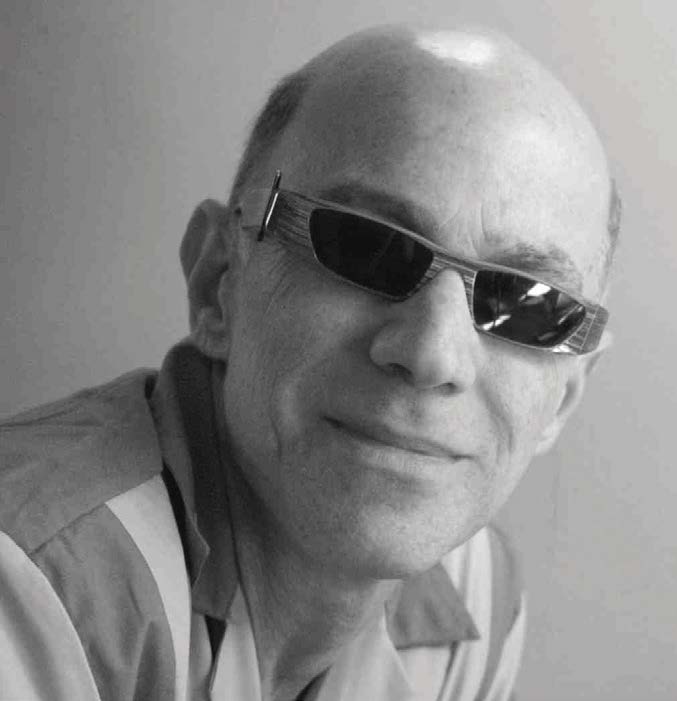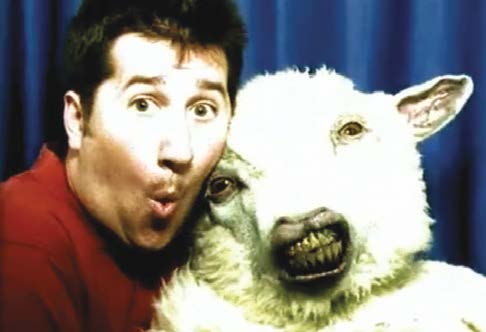 Over the course of its full 40 years, the Mill Valley Film Festival has become famous for more than just its parties, visiting celebrities and tendency to show movies that go on to win Oscars. The MVFF has also become known for its trailers, those imaginative, entertaining promotional shorts created each year to promote the festival in amusing, sometimes baffling, sometimes challenging ways.
Over the course of its full 40 years, the Mill Valley Film Festival has become famous for more than just its parties, visiting celebrities and tendency to show movies that go on to win Oscars. The MVFF has also become known for its trailers, those imaginative, entertaining promotional shorts created each year to promote the festival in amusing, sometimes baffling, sometimes challenging ways.
“People call them trailers, those little film festival shorts,” notes Dennis Scheyer, founder of the San Francisco advertising agency that created some of the most memorable such festival promos between 1996 and 2010. “The only problem is, they’re not really trailers,” he says. “Trailers are actually built from clips of some upcoming movie. What the festival makes are short little films that promote the festival itself, not any particular movie. For what it’s worth, the Mill Valley Film Festival has had some of the best promotional shorts ever made for any film festival anywhere.”
One of the earliest shorts — still considered one of the greatest by those who remember it — was a legendary threeminute piece produced for the MVFF’s eighth outing. It was released in fall 1985. Though Scheyer had nothing to do with that one, he says its influence on future festival promos has been enormous.
“When I first came on board to start making shorts for the festival, that’s the one everyone pointed to as the cream of the crop,” he says. “It’s the one everybody always compares all others to.”
Created by the San Francisco ad agency of Goodby, Berlin & Silverstein (the same folks behind the “Got milk?” campaign), the wry-humored “mockumentary” blended a hip surf-rock soundtrack with clips of “average” Mill Valley residents — sushi chefs, trash collectors, butchers, cops and kids eating breakfast — all waxing eloquent about independent film and foreign movies, debating the differences between the French New Wave and New Zealand experimentalism, deriding their bosses for not knowing who Joseph Papp was.
The short ended with a gag featuring an auto mechanic at work — only his legs visible, sticking out from under a car — as he spiritedly relays a cinema-themed joke to his fellow grease-jockeys.
“God’s up in Heaven, right?” he says. “God looks down at his calendar and he sees the end of the world is coming up. And he decides somebody should film it, right? So he has Saint Peter go down and shop the property for a director.
Saint Peter comes back and says he can’t find a director.
“God says, ‘Well, what about Lucas?’
“St. Peter says, ‘He won’t do it. He’ll produce it, but he won’t direct it!’
‘That’s no good,’ God says. ‘How about Spielberg?’
‘He can’t do it,’ says Saint Peter. ‘It’s something to do with his contract! How about Coppola?’
“God says, ‘Coppola? Coppola? I gotta make a profit on this thing!’ ”
The little comedy classic can still be viewed on YouTube and other web video platforms.
It was a promo created 10 years later in 1995, Scheyer says, that inspired him to reach out to Mark Fishkin, founder of the festival, to offer his services.
“It has Jesus in a taxicab,” he recalls. “It was extremely controversial and not well received. I remember seeing that and calling up the production company and saying, ‘What was that? I could make a more effective film than that!’ And they said, ‘Well, maybe you should!’ So I approached Mark, we talked, and I ended up making 14 or 15 of those promos over the next 14 years. More, actually, because some years, we made two or three.”
The first of those, produced for the 1996 festival, was titled “Great Moments in Mill Valley Cinema History.” Not only did it challenge the supremacy of the 1985 mockumentary, it gave the festival one of its first great taglines.
“We basically took three famous films and redid one or two scenes as if the movies took place in Mill Valley,” Scheyer says. The short begins with an aging tiedyed hippie re-creating John Travolta’s sexy-walk from the opening of Saturday Night Fever, moves on to James Bond being instructed by Q in how to operate his new mountain bike (complete with ejector seat and machine guns in the handlebars), and concludes with a spoof of Apocalypse Now in which Colonel Kurtz talks poetically about coffee. The final words in the film are, “The horror, the horror … the latte, the latte.”
“That slogan was on the T-shirts that year,” Scheyer says proudly. “All the volunteers were wearing shirts that said, “The horror, the horror … the latte, the latte.”
 So began the longest single continuous string of festival promos by any one filmmaker or agency. Remarkably, no two were alike, changing up styles and approaches wildly from year to year.
So began the longest single continuous string of festival promos by any one filmmaker or agency. Remarkably, no two were alike, changing up styles and approaches wildly from year to year.
In 1998, Scheyer oversaw the creation of an animated musical short titled “Welcome to Mill Valley.”
“We used a 16-piece orchestra, oldfashioned cell animation, and got Bud E. Luv to help sing the song,” he says of the film he describes as “an animated tour of Mill Valley, with an elephant. Hey, I always tried to do things that were nearly impossible to do.”
For the 2000 MVFF, Scheyer produced one of the most creative of the bunch, a trailer based on Lars von Trier’s Dogme 95 style of filmmaking. Three filmmakers — Anton Beebe, Mark Dektor and Chris Milk — were asked to make a short piece meeting the following requirements: it must create conflict between two people talking about film; it must involve Mill Valley; there must be an accident of coincidence; someone must say, “We agree on everything, except film”; there must be goldfish.
“They were all amazing, in different ways, and we tied them together with great music,” says Scheyer.
Another highlight, directed by acclaimed documentarian George Hickenlooper, was created for the 28th MVFF in 2005. Titled “Remnants,” it re-created the true story of a janitor who accidentally swept up and threw away a high-priced “art piece” made up of a broken wineglass and a shoe. In the film, as the janitor tosses the pricey bag of trash in the Dumpster, a slogan appears: “There’s no mistaking great film.”
“I’m a slogan guy,” says Scheyer. “We kept that one around for the next few shorts.”
His last shorts for the festival came in 2010, a two-parter featuring Metallica’s Lars Ulrich and actor Peter Coyote. In the films, the two take turns imagining what it would be like to have each other’s jobs, and at the end of each, one of them suggests they go see a film at the Mill Valley Film Festival.
“There’s a Danish film on about a hermaphrodite with no arms and no legs,” Ulrich says in one of the shorts.
“Cool,” says Coyote, appreciatively — and you can tell he means it.
“Peter and Lars wrote those,” Scheyer says. “They said that the only way they would play themselves is if we used their script. So we did. And then they insisted that I direct it. So I did. It was tremendous fun, shooting that. And it turned out great.
“Then again,” he adds with a smile, “I personally think all of the ‘trailers’ we made were great.”
From Broadway to Movies
The very first movie trailer to screen in the United States, oddly enough, was not a preview of a movie. It was, in fact, a short promotional film describing the 1913 Broadway stage musical The Pleasure Seekers.
A brainchild of theater publicist Nils Granlund, the short was screened throughout the Loews theater chain in and around New York City. It was viewed at the time as a stunt, one that was phenomenally effective. Soon other Broadway shows were being advertised through the medium of short motion pictures or slideshows screened along with movies. It took less than a year for the “stunt” to make the leap from plays to movies. Though there is some debate, most historians agree the firstever motion picture trailer was for the 1914 Charlie Chaplin film The Property Man and was constructed of film snippets culled from the raw footage of the movie. More trailers followed, and a new promotional industry was born.
Today, no trip to the theater is complete without a serving of three, four, five or more trailers describing “coming attractions.” Trailers are so named, by the way, because in those early days, they were played at the end of the main feature. When it soon became clear that audiences were departing during the trailer, the previews were moved from after the movie to in front of it. But the name “trailer” somehow stuck.


